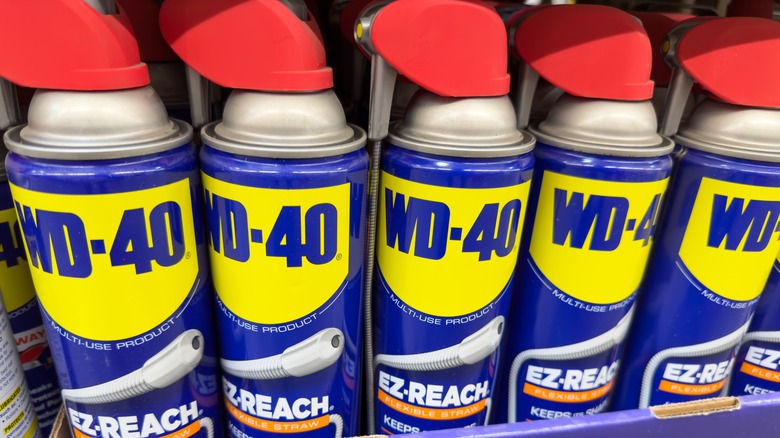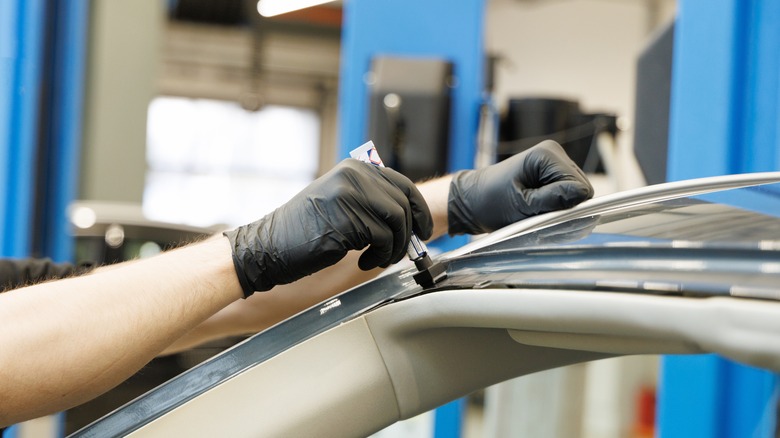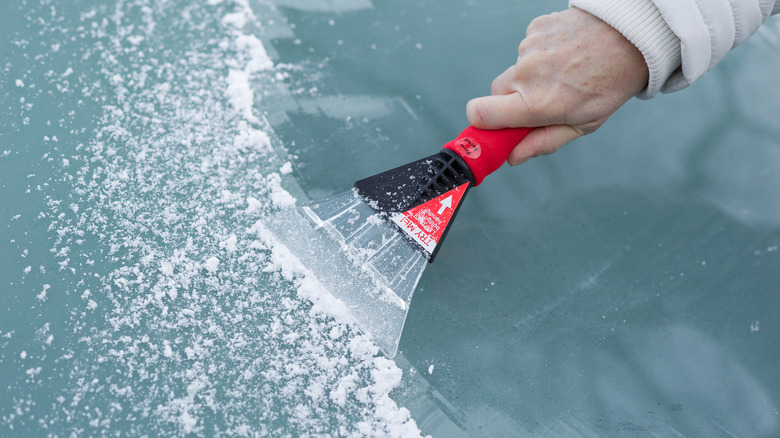Why You Should Avoid Using WD-40 To Defrost Your Car's Windshield
When the winter season rolls around, anyone who has to park their car outside overnight has to deal with that same annoying problem: a windshield completely covered in ice. It's definitely not safe to drive around with a sheet of frost obscuring everything, but it can also take time to physically chip all of it off, which could be problematic if you need to get yourself to school, work, or some other morning commitment.
We've all got places to be, often in a hurry, so it's natural to wonder if there's a faster way to get that ice removed. One supposed remedy that has made the rounds on social media in the last few years is WD-40, with some individuals calling it the perfect way to quickly remove a large sheet of frost from a windshield. It certainly wouldn't be the first time someone discovered a secret hack for the classic multi-purpose spray. However, even if using WD-40 on your windshield does remove the ice quickly, repeatedly defrosting your car in this manner could eventually lead to severe — not to mention costly — damage to your car.
WD-40 contains a substance that can damage a windshield's rubber seals
The theory behind using WD-40 as a defrosting agent makes sense on paper. After all, the "WD" in the name stands for "water displacement," named for its hydrophobic properties. WD-40 can penetrate sticky substances without mixing with them, then loosen them up, which is what gives the chemical compound its degreasing acumen. You may assume, then, that spraying a hydrophobic chemical onto a sheet of ice would naturally loosen it up and cause it to slide off your windshield.
Here's the problem: While using WD-40 on a windshield may loosen and remove ice, the chemical can also wreak havoc on the vital rubber seals that hold your windshield in place. This is because WD-40 contains a substance known as mineral spirits, also known as petroleum spirits. When the rubber seals around your windshield are exposed to mineral spirits, they can begin to soften and swell as the material is slowly turned to melty mush. If those rubber seals fail completely, your windshield could stop being airtight, which could lead to leaks from rain and increased noise while driving, just to name a couple of potential headaches.
For defrosting, stick to scrapers and specialized chemical sprays
The WD-40 brand itself recommends that users refrain from using its multi-purpose spray to defrost windows and windshields. WD-40 products may be good for your car's internal bits, but the only part of your car's exterior that's definitely safe to spray with WD-40 is your license plate, which can actually help to prevent it from icing over or rusting when the weather is wet.
So, if WD-40 is out, how are you supposed to remove the ice from your windshield in time to make your appointment? Of course, you should definitely keep an ice scraping tool in your car to manually scrape all the frost off. However, in addition to the scraper, there are various de-icing sprays you can employ to speed things up; each specially formulated to loosen and melt ice without hurting your car or its vital components. You can get a can of CRC Ice-Off windshield spray on Amazon — just spray the can on your windshield and it'll immediately get to work melting it all off, easily falling away with a bit of scraper action. As an added bonus, that stuff is great for removing ice from your car door locks.


